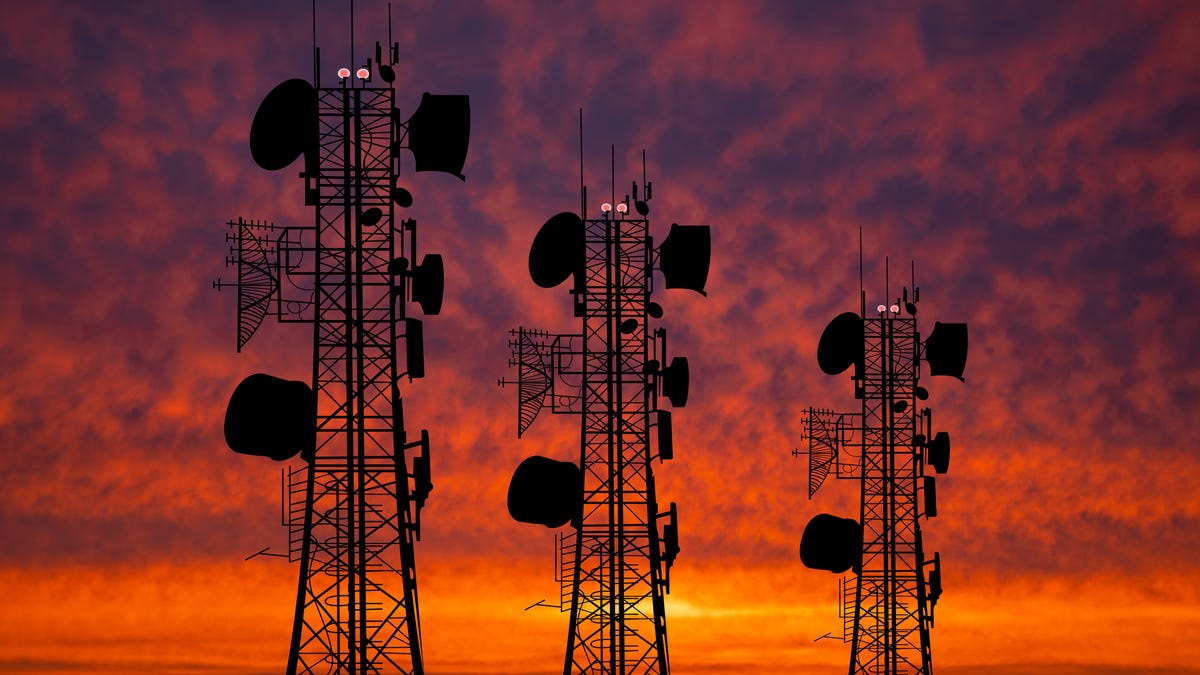AT&T and Dish big winners in latest 5G auction
The FCC says it raised more than $22.5 billion for midband spectrum that previously had been used by the military.

In the US Federal Communications Commission's latest auction, AT&T and satellite TV provider Dish Network were the top winners of airwaves that were once reserved for the military and that'll soon be used for 5G wireless service, the FCC said Friday.
AT&T spent $9.1 billion and Dish spent $7.3 billion for licenses of wireless spectrum that sits between the 2.5 gigahertz and 3.5 gigahertz range of radio frequencies. T-Mobile was the third-highest bidder in the auction, spending $2.9 billion. Verizon Communications didn't participate in the auction.
The so-called midband spectrum that was auctioned off is considered crucial for mobile operators' deployment of the next generation of wireless service known as 5G, which promises to deliver much faster wireless service and a more responsive network. Its ability to connect more devices and offer real-time feedback is expected to spark a sea change in how we live and work, ushering in new advances like self-driving cars and advanced augmented reality experiences.
"Today's 3.45GHz auction results demonstrate that the commission's pivot to midband spectrum for 5G was the right move," said FCC Chairwoman Jessica Rosenworcel.
Midband spectrum provides more-balanced coverage and capacity due to its ability to cover a several-mile radius with 5G, despite needing more cell sites than lower-tiered spectrum bands.
This swath of spectrum has been used exclusively by the military, which used it for naval radar systems, missile control and air traffic control. In 2020, the Trump administration and the Department of Defense determined it could be shared with commercial providers for 5G service.
The auction began in October 2021 under the Biden administration. The FCC said revenue from the auction topped $22.5 billion. Congress required a portion of the proceeds to be used to pay for new equipment. This is meant to ensure that existing military equipment can coexist with cell towers and other gear used by wireless carriers when they deploy 5G service. All other money from the auction will go to the US Treasury.
Spectrum is king
As demand for mobile services increases, wireless carriers have been clamoring to open up more untapped or undertapped airwaves. The FCC has been working to repurpose swaths of spectrum from other industries, including satellite and TV broadcast, to free up space for new mobile phone technologies. The agency has also looked outside commercial entities for spectrum, coordinating efforts with government agencies, such as the Defense Department to provide commercial providers with more access to spectrum.
As a result, in recent years the wireless industry has poured more than $100 billion into acquiring these airwave licenses. The FCC is planning for even more auctions in the future.
But as the spectrum is repurposed, there have been disputes over interference issues. Late last year, the Federal Aviation Administration raised concerns that the use of C-band spectrum, which had been auctioned off in 2020, would interfere with cockpit safety equipment in aircraft. The result was a stand-off between the FAA, the aviation industry and wireless carriers AT&T and Verizon, which had planned to begin using the spectrum they had purchased to deploy 5G service.
Earlier this month, AT&T and Verizon agreed to postpone until Jan. 19 the launch of their 5G services using C-band spectrum.

